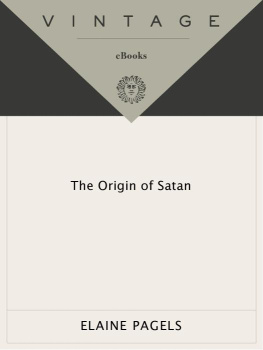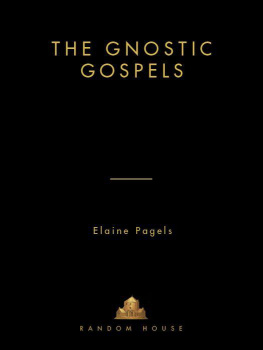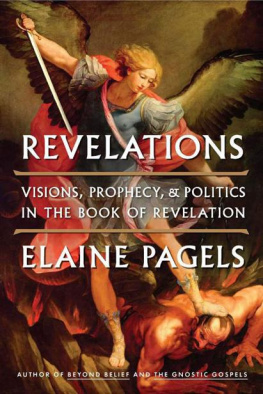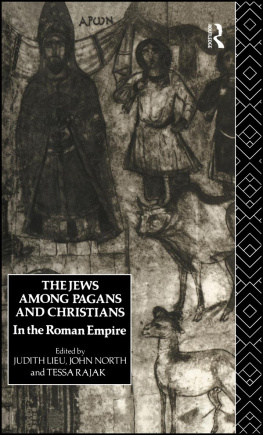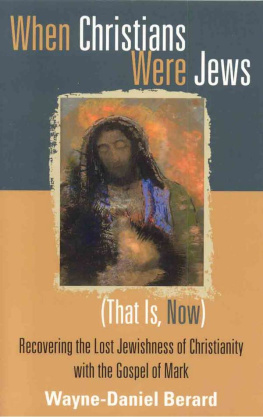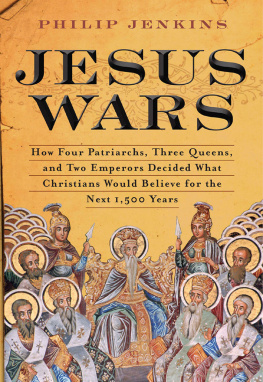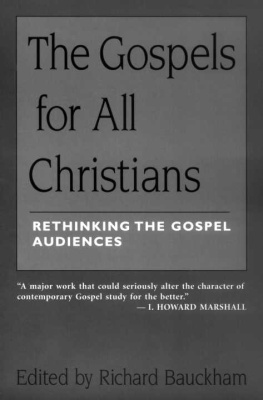Acclaim for
ELAINE PAGELSS
The Origin of Satan
Pagels has achieved something important. Thoughtful scholarly works that are also original and adventurous are not common. The Origin of Satan is such a work, and we should be correspondingly grateful.
New York Review of Books
Illuminating and rewarding a very readable scholarly work a model of erudition and conciseness.
Newsday
Fascinating and valuable.
The Nation
Lucid and closely reasoned. Pagels remains always a lively writer who discerns the human implications of esoteric texts and scholarly disputes.
Chicago Tribune
One of todays leading interpreters of the world of early Christianity. She brilliantly shows how otherwise arcane theology is related to the social context in which it was conceived.
Milwaukee Journal Sentinel
Succeeds wonderfully.
San Francisco Chronicle
ELAINE PAGELSS
The Origin of Satan
Elaine Pagels is Harrington Spear Paine Professor of Religion at Princeton University. Professor Pagels received her doctorate from Harvard University in 1970 and has taught at Barnard College, where she chaired the Department of Religion, and at Columbia University. She was responsible for editing several of the texts from Nag Hammadi and has written four other books: The Johannine Gospel in Gnostic Exegesis; The Gnostic Paul: Gnostic Exegesis of the Pauline Letters; The Gnostic Gospels; and Adam, Eve, and the Serpent. The Gnostic Gospels won the National Book Critics Circle Award and the National Book Award. Professor Pagels was awarded a MacArthur Fellowship in 1981. She lives and teaches in Princeton, New Jersey.
ALSO BY ELAINE PAGELS
Adam, Eve, and the Serpent
The Gnostic Gospels
The Johannine Gospel in Gnostic Exegesis
The Gnostic Paul: Gnostic Exegesis of the Pauline Letters

FIRST VINTAGE BOOKS EDITION, MAY 1996
Copyright 1995 by Elaine Pagels
All rights reserved under International and Pan-American
Copyright Conventions. Published in the United States by
Vintage Books, a division of Random House, Inc., New York, and simultaneously in Canada by Random House of Canada Limited, Toronto. Originally published in hardcover by Random House,
Inc., New York, in 1995.
The Library of Congress has cataloged the
Random House edition as follows:
Pagels, Elaine.
The origin of Satan / Elaine Pagels. 1st ed.
p. cm.
1. DevilBiblical teaching. 2. Bible. N. T. GospelsCriticism, interpretation, etc. 3. Christianity and antisemitism. I. Title.
BS2555.6.D5P34 1995
235.47dc20 95-7983
eISBN: 978-0-307-80736-6
v3.1
To S ARAH AND D AVID
with love
ACKNOWLEDGMENTS
This book is based upon research originally presented, for the most part, in scholarly publications (cited at the beginning of each chapters notes) and revised to make it more generally accessible. During the six years of research and writing, I have consulted with many scholars and friends. First I wish to thank John Gager, Rosemary Reuther, and Krister Stendahl, whose research and teaching have contributed so much to illuminate the issues. I especially thank those colleagues and friends who read the manuscript and offered corrections and criticism: Glen Bowersock, Elizabeth Diggs, Howard Clark Kee, Kent Greenawalt, Wayne Meeks, Sharon Olds, Eugene Schwartz, Alan Segal, Peter Stern, and S. David Sperling; and those who offered comments and criticism on portions of the work as it was in progress, including John Gager, Vernon Robbins, and James Robinson, who read the sections on New Testament sources; Steven Mullaney, who read and commented on the sources presented in is based. No doubt each of these colleagues will disagree with some of my conclusions, for which I must take responsibility.
Research for this book began when I was a visitor at the School of Historical Studies at the Institute for Advanced Study in 199091 and resumed there in 199495. I am most grateful to the members of that school for their gracious hospitality in making available to me, as to many others, the serene and collegial environment the Institute offers. I owe special thanks to Ruth Simmons, Vice Provost of Princeton University, to Jeffrey Stout, Chair of the Department of Religion, and to Robert Gunning, Dean of the Faculty, for making possible a leave to complete the research and writing in 199495, and to the National Endowment for the Humanities for the fellowship that supported me during that year.
I wish to thank my colleagues in the Department of Religion at Princeton University, both for conversations that have contributed much to the process and for their grace and understanding during these years, and also to thank the graduate students who struggled through the Greek texts with me in our seminar: Gideon Bohack, Robert Cro, Nicola Denzey, Obery Hendricks, Anne Merideth, Sharon Hefetz, and Joel Walker.
There are certain people without whose participation I cannot imagine having written this book. I am very fortunate and privileged to have worked with Jason Epstein as editor, and deeply appreciate the insight, wit, and passion for clarity he has brought to this process, along with his enthusiastic support. Helaine Randerson has worked on the manuscript through the entire process, offering incisive comments and editorial criticism along with her astonishingly expert manuscript preparation. John Brockman and Katinka Matson have offered encouragement on the project from the beginning, and have contributed in innumerable ways. I am grateful, too, to Anne Merideth for her collaboration in finding research materials, as well as for her excellent judgment on many issues we discussed. I have appreciated and enjoyed working with Virginia Avery, whose editorial suggestions have improved the text; and also thank Joy de Menil for all that she contributed.
Finally, I am grateful to the many friends whose presence and personal support in ways known to each of them helped see me through these difficult years since my husbands death, and mention in particular Malcolm Diamond, Elizabeth Diggs, Sarah Duben-Vaughn, Kent Greenawalt, my brother and sister-in-law, Ralph and Jane Hiesey, Kristin Hughes, Elizabeth and Niccola Khuri, Emily McCulley, Sharon and David Olds, Albert Raboteau, Kathy Murtaugh, and Margot Wilkie.
CONTENTS
INTRODUCTION
In 1988, when my husband of twenty years died in a hiking accident, I became aware that, like many people who grieve, I was living in the presence of an invisible beingliving, that is, with a vivid sense of someone who had died. During the following years I began to reflect on the ways that various religious traditions give shape to the invisible world, and how our imaginative perceptions of what is invisible relate to the ways we respond to the people around us, to events, and to the natural world. I was reflecting, too, on the various ways that people from Greek, Jewish, and Christian traditions deal with misfortune and loss. Greek writers from Homer to Sophocles attribute such events to gods and goddesses, destiny and fateelements as capricious and indifferent to human welfare as the forces of nature (which is our term for these forces).
In the ancient Western world, of which I am a historian, manyperhaps mostpeople assumed that the universe was inhabited by invisible beings whose presence impinged upon the visible world and its human inhabitants. Ancient Egyptians, Greeks, and Romans envisioned gods, goddesses, and spirit beings of many kinds, while certain Jews and Christians, ostensibly monotheists, increasingly spoke of angels, heavenly messengers from God, and some spoke of fallen angels and demons. This was especially true from the first century of the common era onward.
Next page
